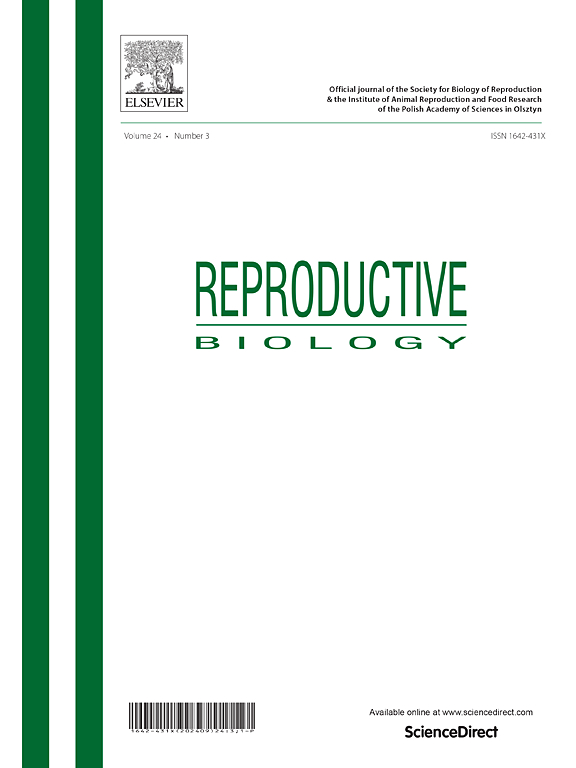Anti-mullerian hormone in felids: A systematic review
IF 2.5
3区 生物学
Q3 REPRODUCTIVE BIOLOGY
引用次数: 0
Abstract
Anti-Müllerian hormone (AMH) is a dimeric glycoprotein that belongs to the transforming growth factor-β (TGF-β) superfamily. This hormone that is produced by gonadal Sertoli cells in males and granulosa cells in females has been extensively studied in humans, rodents, and livestock species. Research on AMH in felids began in 2011 and given the increasing number of studies over recent years, an updated literature review is necessary to clarify and organize future research directions. The objective of this article was to conduct a systematic review of AMH in domestic and wild felids. From a literature search of international publications, 23 were selected for inclusion. AMH determinations were performed using commercial enzyme-linked immunosorbent assays (ELISA) and electrochemiluminescence immunoassays (EQLIA). In female felids, AMH concentrations decrease with age, along with follicular reserve diminution. AMH can also be used to diagnose granulosa cell ovarian tumors and cryptorchidism in females and males, respectively. This hormone serves as a marker for reproductive status and can reflect gonadal function in both genders. Furthermore, AMH may prove to be a valuable predictive tool for reproductive biotechnologies in both domestic and wild felids. Several aspects of this hormone still remain to be elucidated, including its variations throughout the estrous cycle and the effect of photoperiod. Finally, standardization of assays and the establishment of reference ranges for both domestic and wild animals are necessary for widespread clinical application and future research development.
田间抗苗勒管激素:系统综述
抗勒氏激素(AMH)是一种二聚体糖蛋白,属于转化生长因子-β (TGF-β)超家族。这种激素是由雄性的性腺支持细胞和雌性的颗粒细胞产生的,已经在人类、啮齿动物和牲畜物种中进行了广泛的研究。田间AMH的研究始于2011年,近年来研究越来越多,有必要更新文献综述,以明确和组织未来的研究方向。本文的目的是进行系统综述AMH在国内和野生野地。从国际出版物的文献检索中,选择了23篇纳入。AMH测定采用商用酶联免疫吸附法(ELISA)和电化学发光免疫分析法(EQLIA)。在雌性田鼠中,AMH浓度随着年龄的增长而下降,伴随着卵泡储备的减少。AMH也可分别用于诊断女性和男性卵巢颗粒细胞瘤和隐睾症。这种激素是生殖状态的标志,可以反映两性的性腺功能。此外,AMH可能被证明是家畜和野生动物生殖生物技术的一个有价值的预测工具。这种激素的几个方面仍有待阐明,包括它在整个发情周期中的变化和光周期的影响。最后,标准化检测方法,建立家畜和野生动物的参考范围,是广泛临床应用和未来研究发展的必要条件。
本文章由计算机程序翻译,如有差异,请以英文原文为准。
求助全文
约1分钟内获得全文
求助全文
来源期刊

Reproductive biology
生物-生殖生物学
CiteScore
3.90
自引率
0.00%
发文量
95
审稿时长
29 days
期刊介绍:
An official journal of the Society for Biology of Reproduction and the Institute of Animal Reproduction and Food Research of Polish Academy of Sciences in Olsztyn, Poland.
Reproductive Biology is an international, peer-reviewed journal covering all aspects of reproduction in vertebrates. The journal invites original research papers, short communications, review articles and commentaries dealing with reproductive physiology, endocrinology, immunology, molecular and cellular biology, receptor studies, animal breeding as well as andrology, embryology, infertility, assisted reproduction and contraception. Papers from both basic and clinical research will be considered.
 求助内容:
求助内容: 应助结果提醒方式:
应助结果提醒方式:


